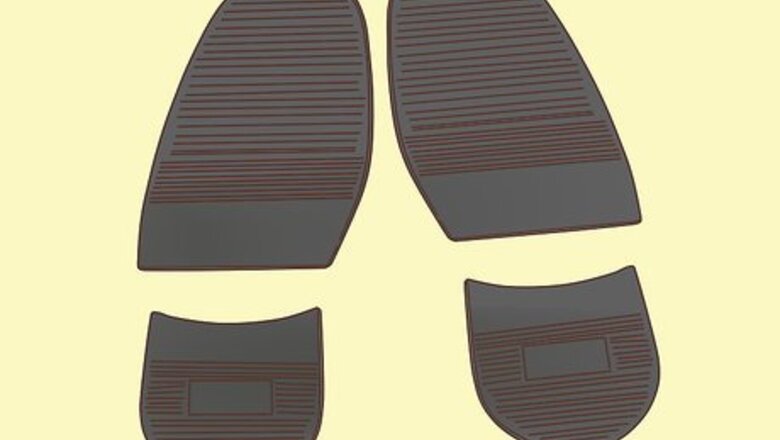
views
Protecting Shoes with Rubber Protectors
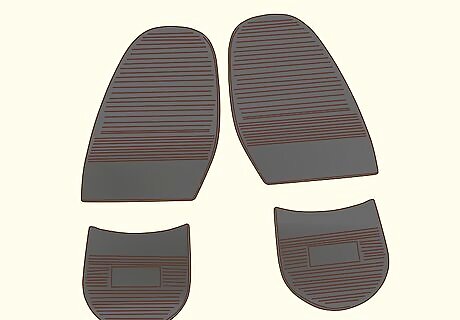
Purchase rubber sole protectors for leather-soled shoes. Not adding soles protectors to your shoes can cause them to grind down completely within 4-6 months if you regularly walk on pavement or cement. For leather-soled dress shoes, rubber sole protectors are the most common. If you are adding rubber soles to older shoes, doing so can delay your need to purchase new shoes or have your shoes re-soled by a repair shop.
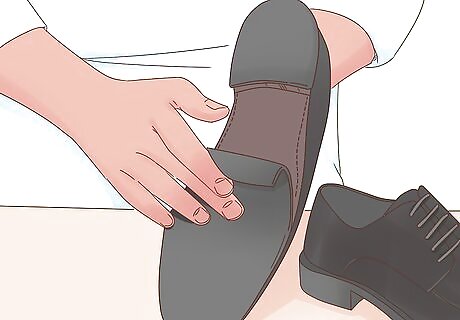
Apply the sole protector to a clean sole. Older shoes must be free from dirt and debris, or the sole protector will not stick. Most rubber sole protectors are a peel-and-stick variety, with clear instructions on the packaging. If you are using half-sole and heel lift protectors: Clean the bottom surfaces of the shoe, scraping off any old glue from previous sole protectors. Mark the appropriate location of the sole protector before applying glue to ensure an accurate placement. Apply the rubber cement and affix the half sole and heel lift. Wrap the shoes tightly with string and allow the glue to cure for at least five hours.

Trim the sole protector to the correct size. Using a sharp knife, carefully trim the excess rubber around the shoe sole. Using a small utility knife makes this process easier for half-soles. Once the soles are trimmed, let the glue cure for at least 12 hours for half-soles. Otherwise you are ready to wear your shoes!
Protecting Shoes with Screen Protectors

Remove your new shoes from the box and place them on a flat surface. Using a screen protector is an excellent way to protect the sole of the shoe, but it generally only works on new shoes. The dirt on old shoe soles prevents the screen protector from sticking properly and will cause cracks in the protector.
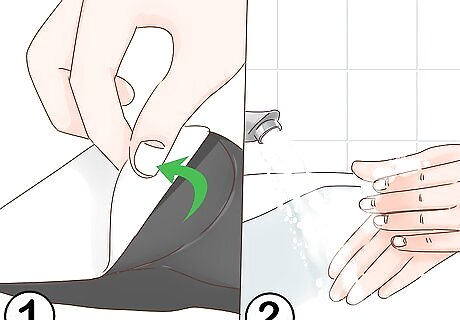
Remove any stickers from the soles and wash your hands. The screen protector will not adhere well to the sole if the sticker is in the way. Check both shoes, but the sizing sticker is generally on the right shoe. Washing your hands gets rid of any residue or excess oil that will make handling the sticky side of the screen protector difficult.
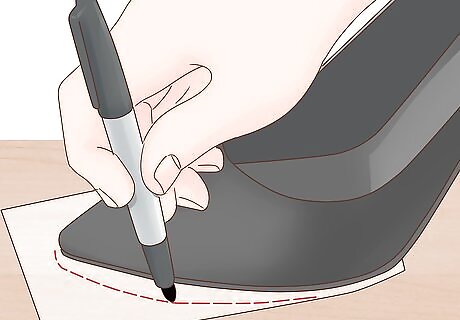
Place your shoes on the screen protector and trace them. Cut out the shield in the shape of the shoe and place on the flat surface. Put the shoes down on the templates, making sure the size is accurate. Most high heeled shoes require a iPad or Kindle-sized screen protector. Trim off excess, as needed.
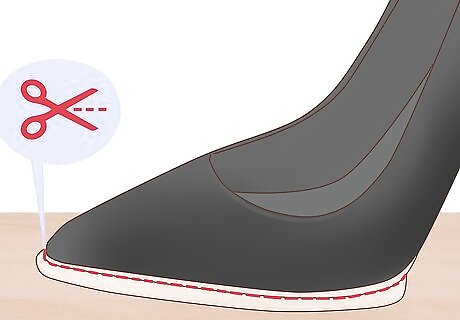
Apply the shield to the sole of the shoe and remove excess bubbles. Be careful about which side of the shield you peel off first. Read the directions on the shield to determine which side and color must go down on the sole, first. Squeezing out the excess bubbles generally happens in two stages, so do not worry if you do not get them all out on the first try!
Protecting the Toes and Heels of Shoes
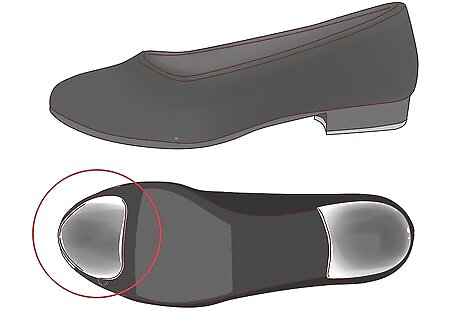
Add toe taps to your shoes to prevent premature wear and tear. No matter how careful you are, the toe area of shoes wears down faster than the rest of the shoe. Affixing toe taps to your shoes can increase their longevity for a small monetary investment. Toe taps are generally metal and plastic, and can be added to your shoes for about $20.
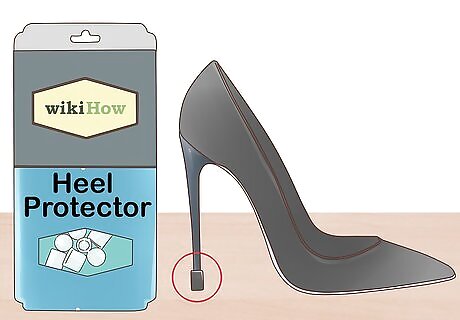
Purchase heel protectors and use them for walking on pavement. Even if you only wear heels between your home, car, and office, using heel protectors can make a huge difference for your shoes. Simply place the protector cap over your heels before you walk outside, and remove them once you reach your destination. They come in multiple colors, and also help with traction.

Replace heel caps as soon as they start wearing down or cracking. Taking care of the heels of your shoes is just as important as protecting the soles. Once you notice the heel cap wearing down, take your shoes into a local repair shop and have the caps replaced. If you do not, the nail in the heel can be forced into an irreparable position and your hard work to protect the soles of your shoes could be lost!
Protecting Shoes at Home
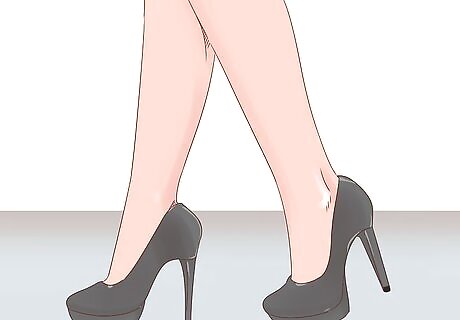
Wear new shoes around the house to break them in and check for fit. Adding sole protectors, toe taps, and heel protectors might change how your shoes feel on your feet. Test them out by walking around your house for a few minutes to make sure your shoes feel okay on your feet. This will also give new shoes the chance to break in before wearing them for prolonged periods of time.
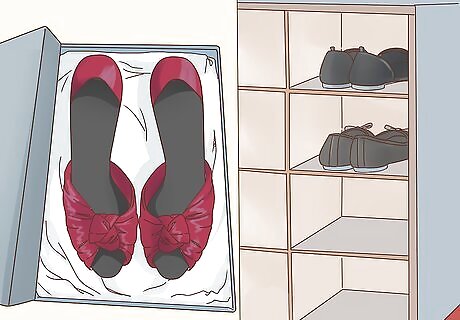
Store your expensive shoes in their boxes and older shoes on a shoe rack. The way shoes are stored at home is just as important as how you wear them out. Do not simply throw your shoes into the closet, as it increases the chance for scratches and other damage. You can also use a shoe tree to help draw moisture out of your shoes and keep them in shape.
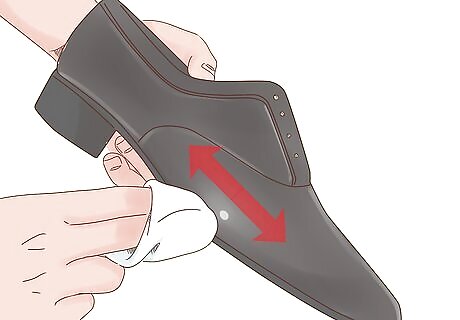
Condition your leather shoes regularly to prevent cracking. Most leather cleaners are about $10 and last years, making it an easy investment in shoe longevity. Simply bush dirt off of your shoes, rub some conditioner on the surface, and wipe off the excess after a few minutes.











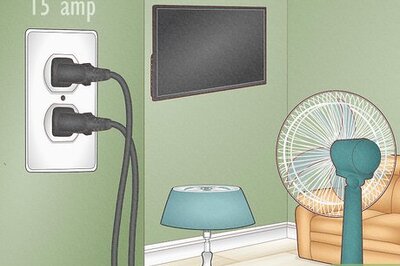



Comments
0 comment